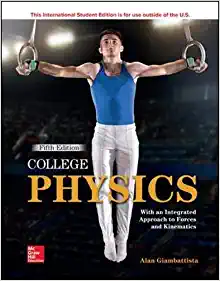In a motor, a flywheel (solid disk of radius R and mass M) is rotating with angular
Question:
In a motor, a flywheel (solid disk of radius R and mass M) is rotating with angular velocity ωi. When the clutch is released, a second disk (radius r and mass m) initially not rotating is brought into frictional contact with the flywheel. The two disks spin around the same axle with frictionless bearings. After a short time, friction between the two disks brings them to a common angular velocity.
(a) Ignoring external influences, what is the final angular velocity?
(b) Does the total angular momentum of the two change? If so, account for the change. If not, explain why it does not.
(c) Repeat (b) for the rotational kinetic energy.
Fantastic news! We've Found the answer you've been seeking!
Step by Step Answer:
Related Book For 

College Physics With An Integrated Approach To Forces And Kinematics
ISBN: 978-1260547719
5th Edition
Authors: Alan Giambattista
Question Posted:





